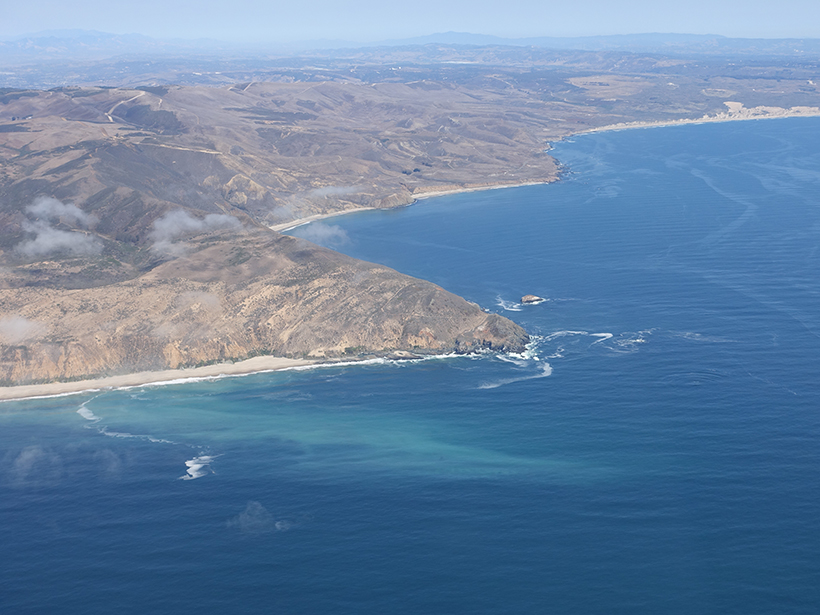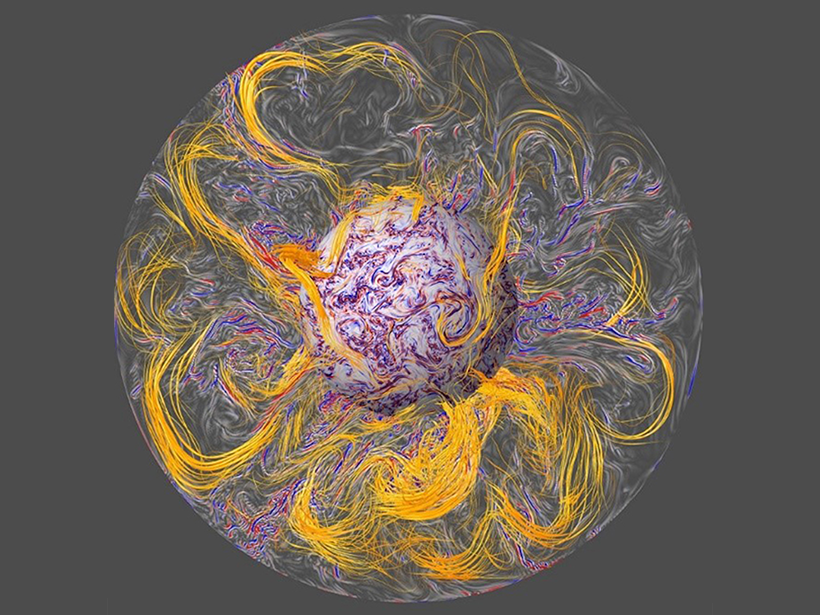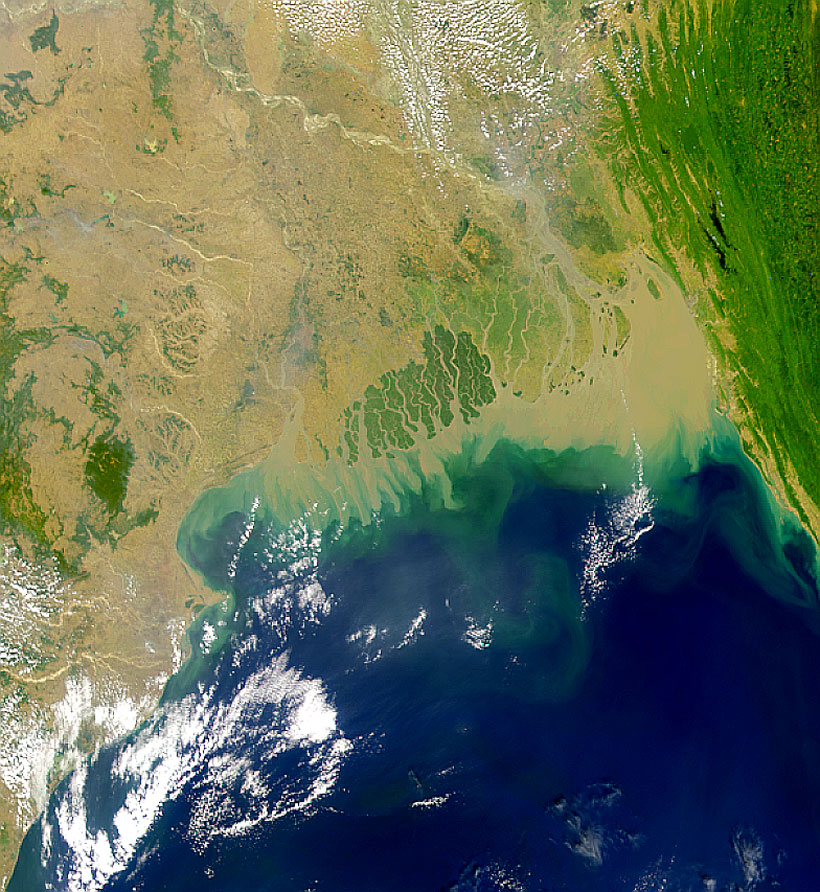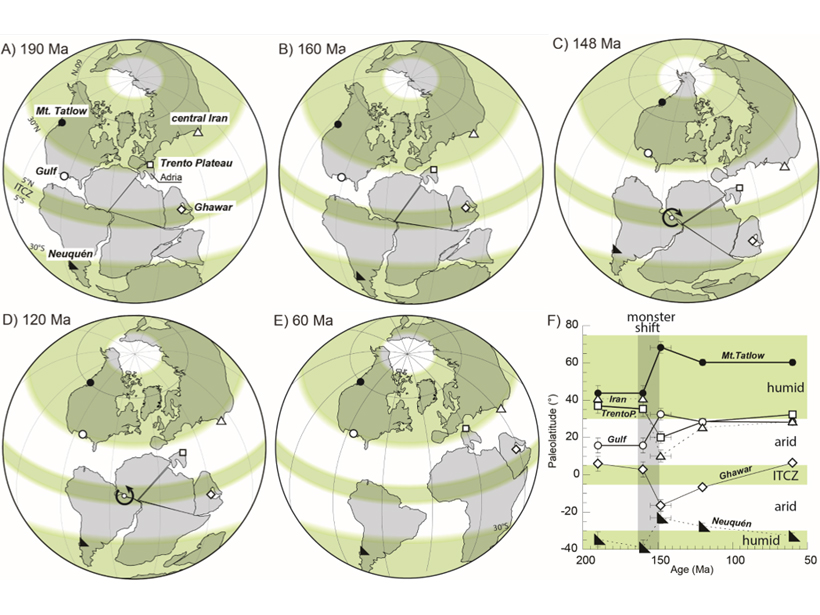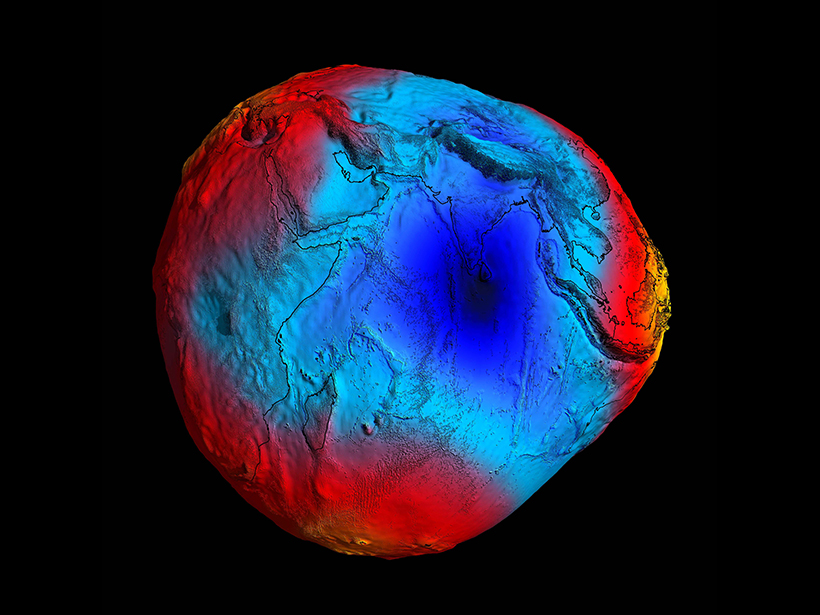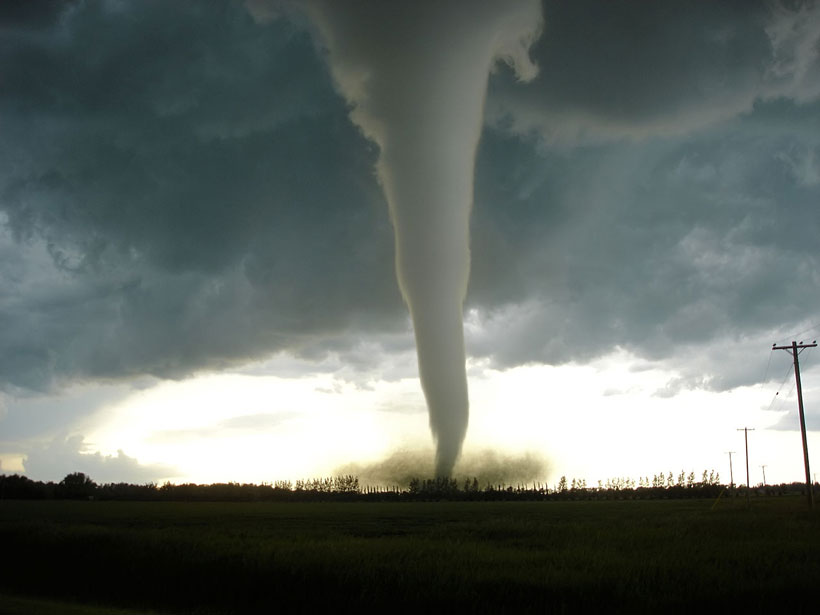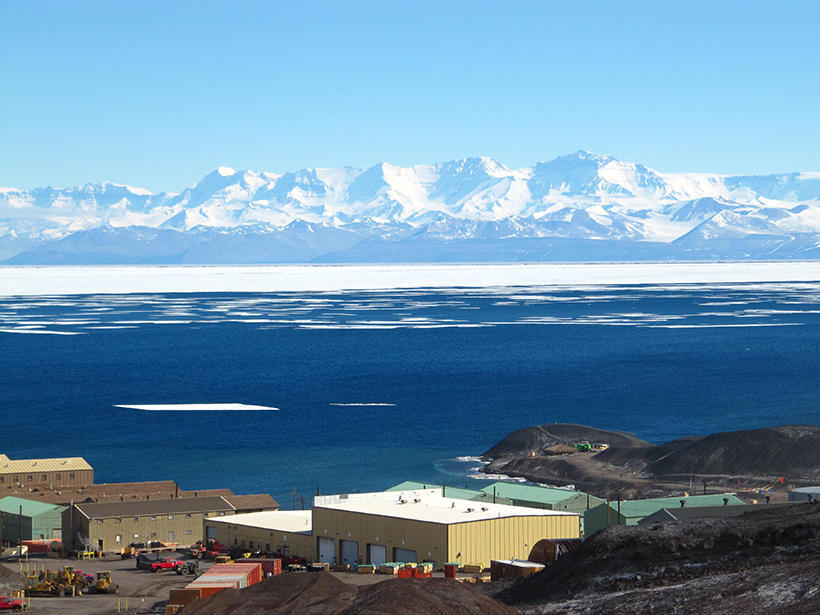Grazing rings around reefs have the potential to be used as a tool for monitoring reef health, but first, scientists have to figure out what factors govern halo size differences.
unsolved mysteries
Untangling a Web of Interactions Where Surf Meets Coastal Ocean
In 2017, an ocean research team launched an unprecedented effort to understand what drives ocean currents in the overlap regions between surf zones and continental shelves.
New Model Shines Spotlight on Geomagnetic Jerks
Scientists get one step closer to being able to predict jerks—notoriously capricious changes to Earth’s geomagnetic field detectable by satellites.
The Search for the Severed Head of the Himalayas
To unearth the very first sediments to erode from the Himalayas, a team of scientists drilled beneath the Bay of Bengal.
Extraordinary Polar Wander During the Late Jurassic?
Small amounts of polar wander have occurred during geological history, but whether larger amounts occurred is still controversial. Did a truly large polar wander event really happen?
Seismologists Search for the Indian Ocean’s “Missing Mass”
An Indian scientific team set out to sea last year to find clues to the source of an unusually weak gravitational potential in the middle of the Indian Ocean.
If Precipitation Extremes Are Increasing, Why Aren’t Floods?
Improving our understanding of the relationship between changes in precipitation and flooding due to rising temperature is a new grand challenge for the scientific community, argue the authors of a recent commentary.
Before Canadian Scientists Can Study Tornadoes, They Have to Find Them
A yearlong project aims to find more than 150 “missing” tornadoes thought to hit Canada each year.
The Unsolved Mystery of the Earth Blobs
Researchers peering into Earth’s interior found two continent-sized structures that upend our picture of the mantle. What could their existence mean for us back on Earth’s surface?
Observations Show Gravity Waves Above Antarctica Dance in Winter
Year-round observations show gravity waves above Antarctica exhibit seasonal patterns that peak in winter, which could help researchers trace the source of this mysterious phenomenon.


